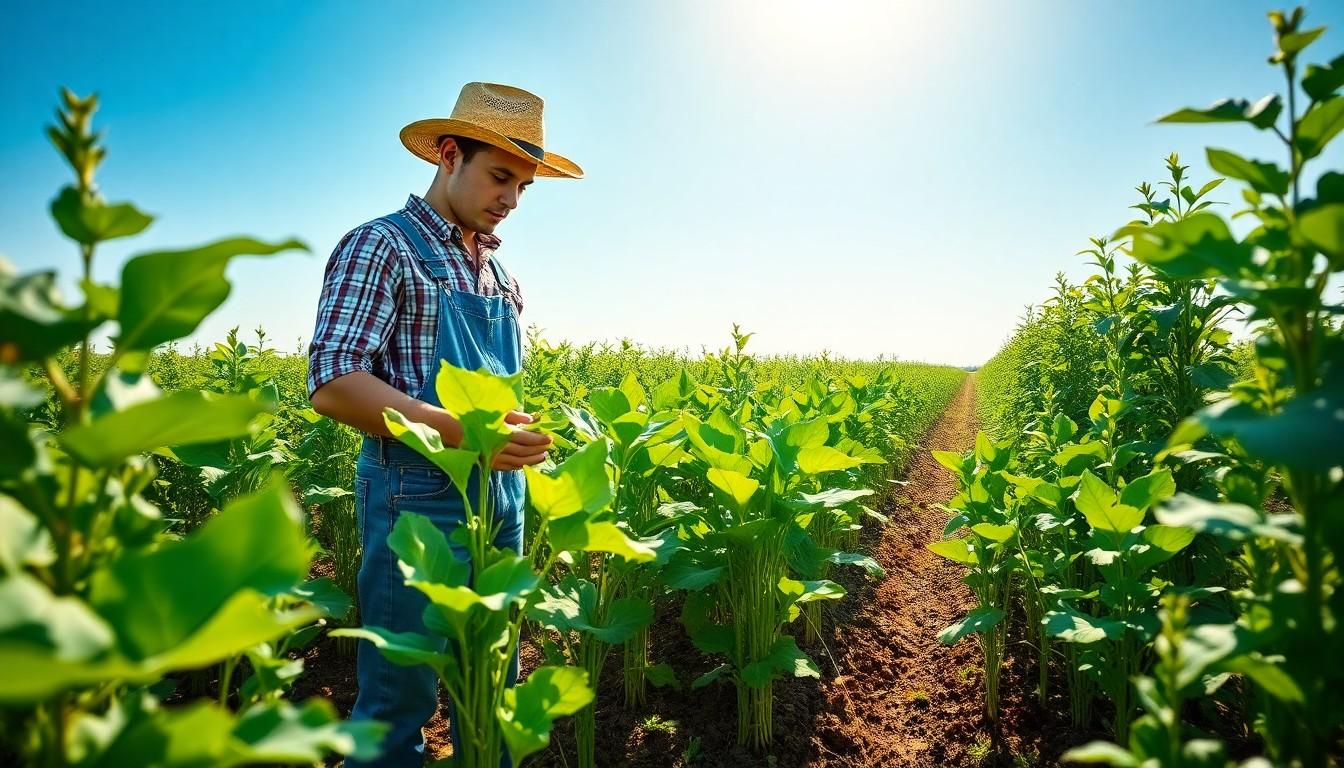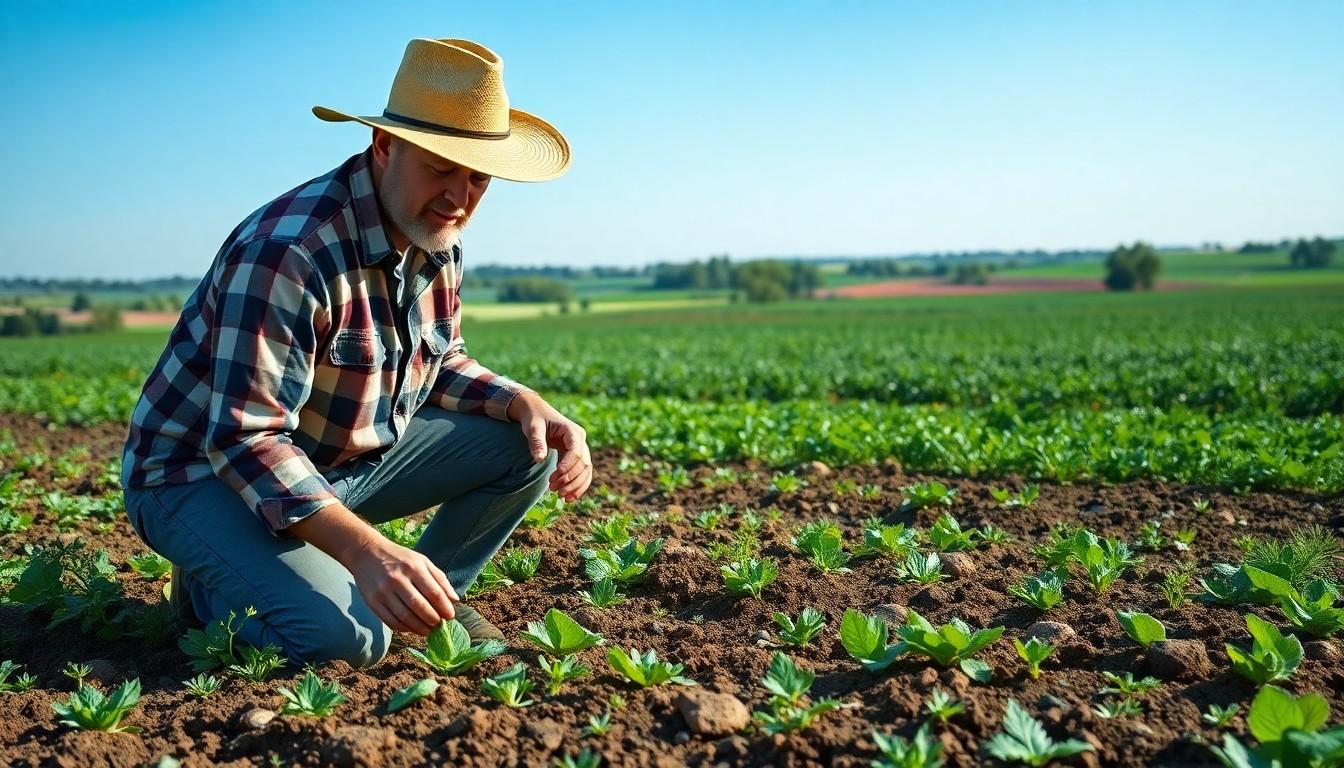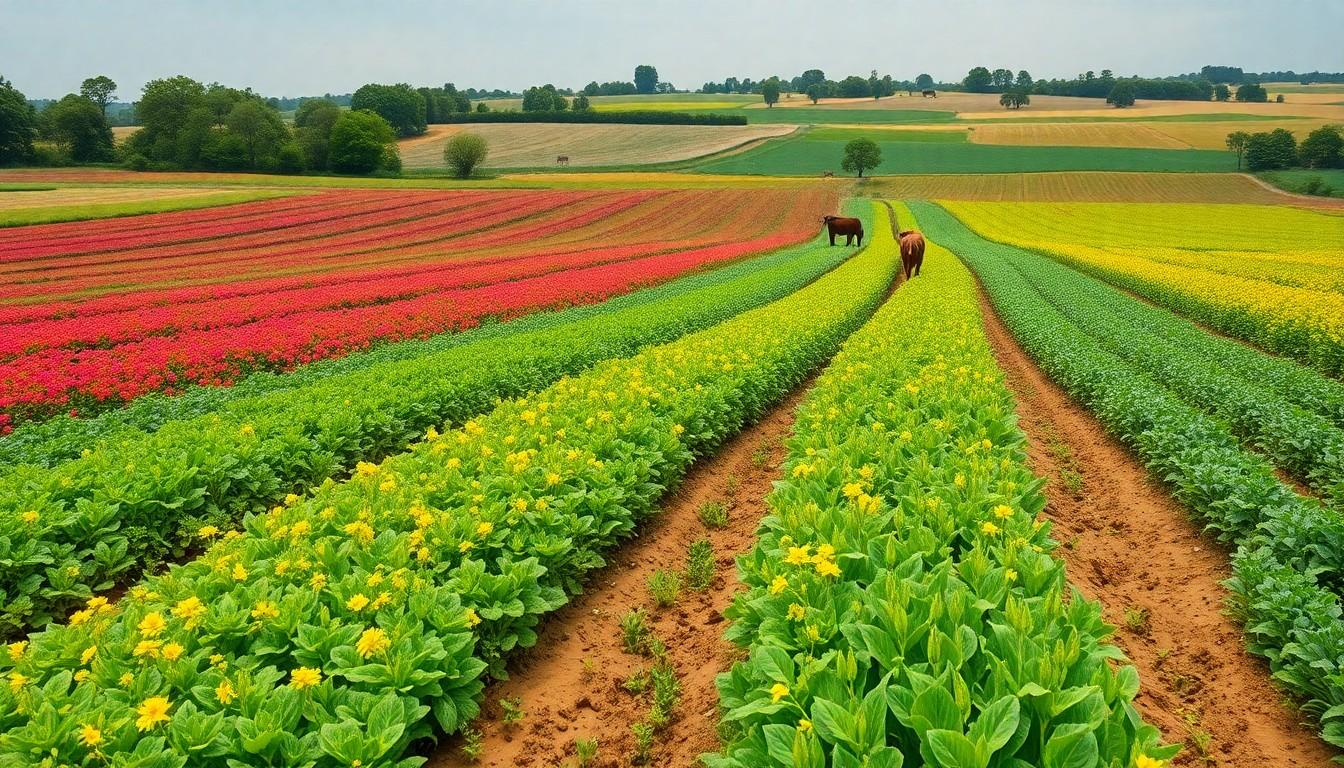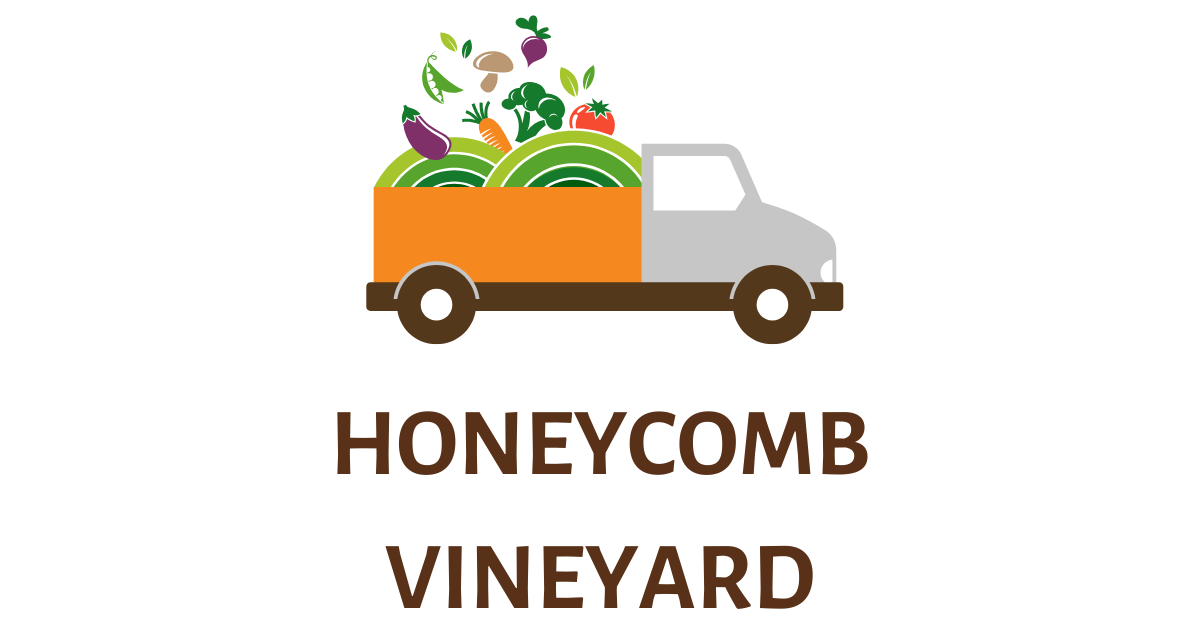The Best Fluffy Pancakes recipe you will fall in love with. Full of tips and tricks to help you make the best pancakes.

Benefits of Regenerative Agriculture: Transform Your Farming and Save the Planet
Regenerative agriculture isn’t just a buzzword; it’s a game-changer for our planet and our plates. Imagine farming that not only produces food but also heals the soil, captures carbon, and boosts biodiversity. Sounds like a superhero, right? Well, it is! This innovative approach flips conventional farming on its head, turning tired land into thriving ecosystems.
Benefits of Regenerative Agriculture
Regenerative agriculture represents a groundbreaking approach to farming. This method prioritizes the health of soil, aiming to restore its natural balance. By implementing practices like cover cropping, farmers enhance soil fertility while reducing erosion. Crop rotation plays a crucial role, enhancing biodiversity and minimizing pest outbreaks.
Farmers adopt composting techniques, enriching the soil with organic matter. These practices contribute to improved water retention, leading to increased resilience against drought. Livestock integration also supports nutrient cycling, further promoting overall farm health.
Research shows regenerative practices can lead to higher crop yields over time. Notably, fields managed with regenerative techniques sequester carbon, addressing climate change challenges. This approach helps create thriving ecosystems, supporting a variety of plant and animal species.
Regenerative agriculture encompasses a holistic philosophy, recognizing the interconnectedness of all farm elements. By focusing on sustainable practices, it enhances food quality and safety. The commitment to environmental stewardship resonates with consumers increasingly concerned about the origins of their food.
Implementing regenerative methods fosters community connections, supporting local economies. Farms practicing regeneration often report stronger ties to surrounding communities. This approach not only benefits individual farms but also promotes a more sustainable food system overall.
Continuous learning and adaptation characterize regenerative agriculture, driving innovation within farming communities. The focus remains on understanding and working with nature rather than against it. This alignment leads to thriving farms, healthier communities, and a more sustainable future.
Environmental Benefits

Regenerative agriculture offers numerous environmental advantages. This innovative farming method enhances ecosystem resilience while addressing critical environmental challenges.
Soil Health Improvement
Soil health benefits significantly from regenerative agriculture. Practices like cover cropping and crop rotation restore soil structure and fertility. Enhanced microbial activity leads to improved nutrient cycling, promoting healthier plants. Reduced erosion occurs due to strengthened soil aggregates. Farmers enrich soil using compost, increasing organic matter content and moisture retention. Healthier soils boost crop productivity over time, creating a sustainable food system. Improved soil health contributes to greater resilience against climate fluctuations, benefiting overall agricultural output.
Biodiversity Enhancement
Biodiversity thrives under regenerative agriculture. Diverse plant species cultivate habitats for various insects and animals, enhancing ecosystem balance. Increased crop diversity limits pest outbreaks, reducing reliance on chemical inputs. Pollinator populations benefit significantly from varied flowering plants, improving crop pollination rates. Livestock integration promotes nutrient cycling, supporting diverse soil organisms and fostering healthy ecosystems. This farming approach leads to richer biodiversity, positively impacting long-term agricultural sustainability.
Economic Benefits
Regenerative agriculture offers significant economic advantages for farmers and local communities. By adopting these practices, farmers enhance their long-term profitability while contributing to sustainable food systems.

Increased Crop Yields
Crop yields often increase significantly over time with regenerative agricultural practices. Research shows that soil health improvements lead to better nutrient cycling and stronger plant resilience. Diverse cropping systems reduce dependence on chemical inputs and enhance overall productivity. Farmers frequently report heightened crop quality alongside quantity gains. Investing in regenerative methods typically yields returns that align with enhanced soil biology and structure. Many growers witness a reduction in pest pressures, boosting harvests even further.
Cost Savings for Farmers
Farmers experience notable cost savings when implementing regenerative agriculture. Reduced reliance on synthetic fertilizers and pesticides translates into lower input costs. Cover crops, for instance, enhance soil fertility and can decrease the need for expensive soil amendments. These practices also minimize erosion and enhance water retention, leading to lower irrigation costs. Farmers gain additional savings through increased resilience to climate stressors, reducing the economic impact of droughts or floods. Over time, the cumulative savings can significantly improve farm profitability, allowing reinvestment in sustainable practices and technologies.
Social Benefits
Regenerative agriculture brings numerous social benefits to communities. It strengthens local connections and cultivates resilience through collaborative practices.
Community Resilience
Community resilience thrives under regenerative agriculture. Farms often become hubs for collaboration, fostering social networks among farmers, consumers, and local businesses. This collaborative spirit enhances food sovereignty by empowering communities to prioritize local food production. Local economies benefit from strengthened ties, with farmers investing in nearby services and infrastructure. Significant community engagement emerges as farms host educational programs and workshops. By sharing knowledge and resources, communities enhance their ability to withstand social and economic challenges. Increased awareness leads to proactive measures addressing vulnerabilities, creating a supportive environment for sustainable practices.
Healthier Food Systems
Regenerative agriculture enhances food system health significantly. Nutrient-dense crops result from practices prioritizing soil health and biodiversity. Communities gain access to locally produced, high-quality foods, reducing dependence on processed options. Health outcomes improve as people consume fresher produce, featuring higher levels of essential vitamins and minerals. Involvement in local food systems promotes transparency, allowing consumers to understand food origins and practices. Families benefit from direct relationships with farmers, fostering trust and accountability in food sourcing. Educating consumers about sustainable practices encourages broader acceptance of environmentally friendly choices. Furthermore, healthier food systems support long-term sustainability, creating a collective commitment to environmental stewardship and well-being.
Challenges and Considerations
Transitioning to regenerative agriculture presents unique challenges that stakeholders must navigate. Knowledge gaps in regenerative practices often hinder adoption among farmers. Many lack access to resources and expertise, making education crucial for successful implementation. Financial investments in infrastructure and training may also prove significant, which can be a barrier for small-scale farmers.
Market access remains another consideration. Consumer demand for regenerative products continues growing, yet farmers must often establish reliable markets. Certification processes for regenerative practices can be complex and costly, leaving some producers uncertain about the benefits. Competing with conventional agriculture, which benefits from established supply chains and consumer preferences, adds to the struggle.
Weather variability introduces additional challenges for farmers. Climate change impacts, including unpredictable rainfall and temperature fluctuations, may affect crop yields—making the resilience offered by regenerative practices even more vital. Balancing short-term needs with long-term goals requires ongoing commitment from farmers, which can be difficult in economically pressured environments.
Policy frameworks also play a role in shaping regenerative agriculture’s future. Supportive regulations and incentives encourage farmers to adopt sustainable practices, yet existing policies may favor traditional farming methods. Advocating for policy changes remains essential to fostering a more regenerative agricultural landscape.
Collaboration among farmers, researchers, and consumers is key. Sharing best practices can enhance collective learning, leading to improved outcomes. Building networks within local communities fosters resilience in the face of environmental and economic challenges, promoting a stronger commitment to sustainable practices among all stakeholders.
Sustainable Farming Practices
Regenerative agriculture stands as a beacon of hope for sustainable farming practices. By focusing on soil health and biodiversity it not only enhances food production but also fosters environmental resilience. This approach empowers farmers to build stronger ties with their communities while producing nutrient-rich crops that benefit public health.
As the demand for sustainable food sources grows regenerative agriculture offers a pathway to both environmental and economic stability. The commitment to continuous learning and adaptation ensures that farming communities can thrive amidst challenges. Embracing these practices is crucial for creating a healthier planet and a more sustainable future for generations to come.
